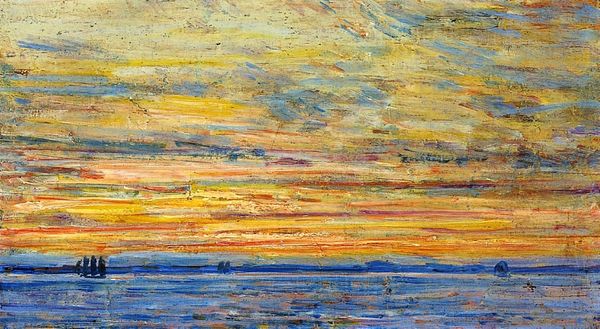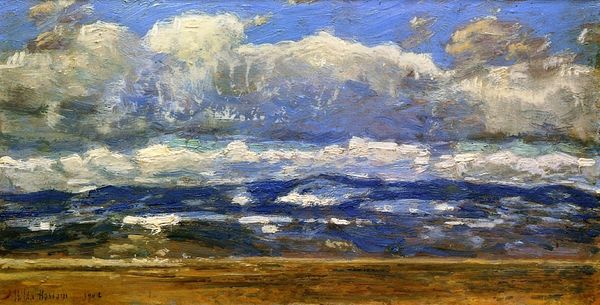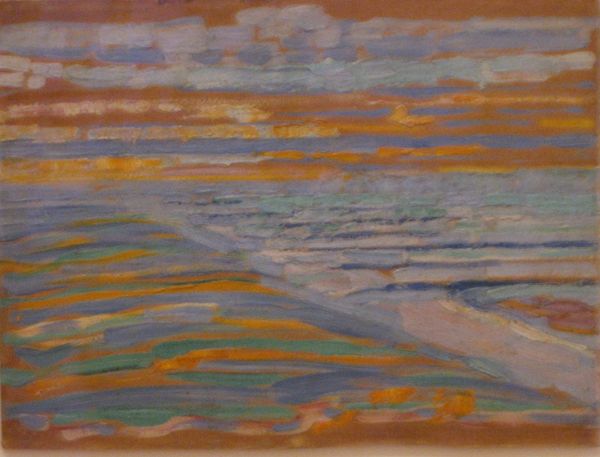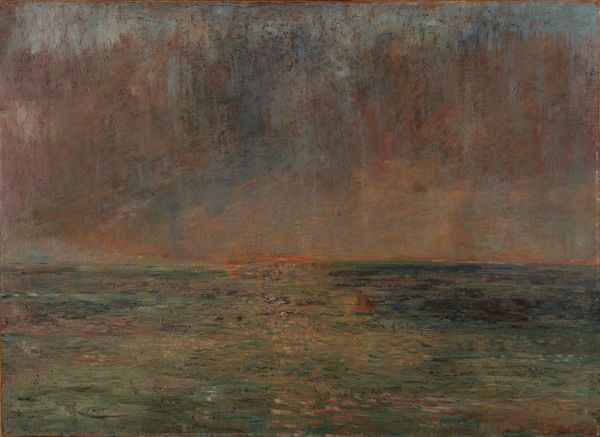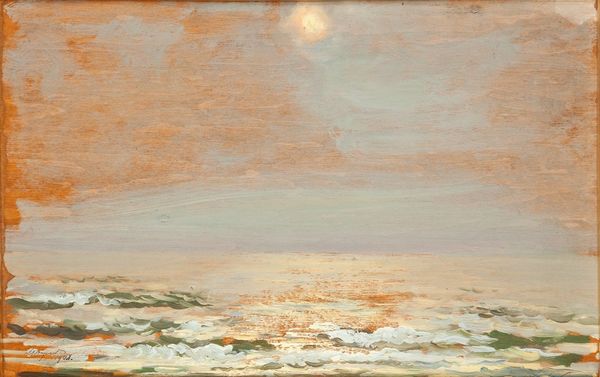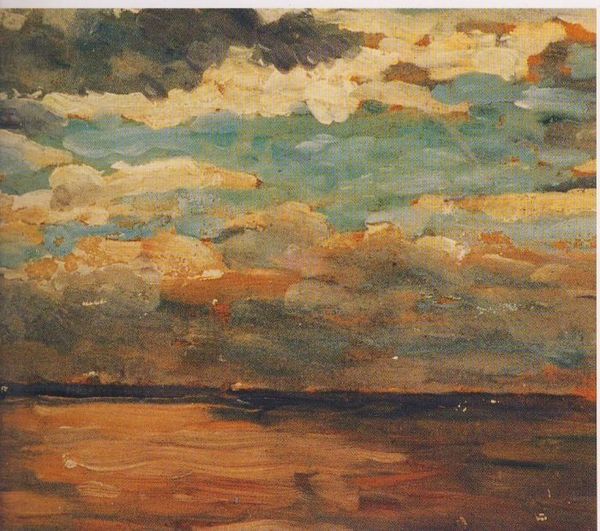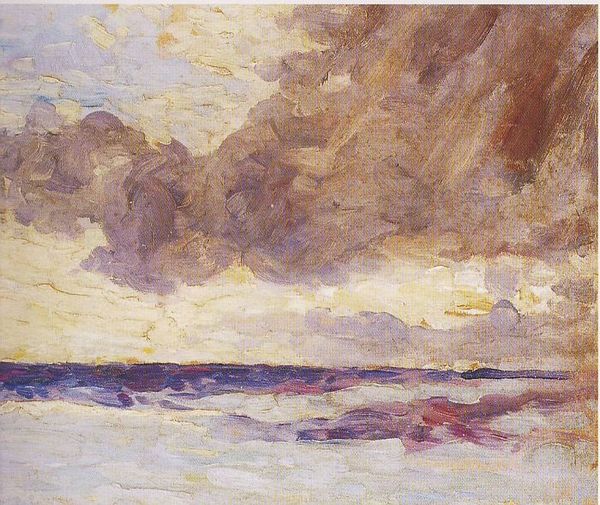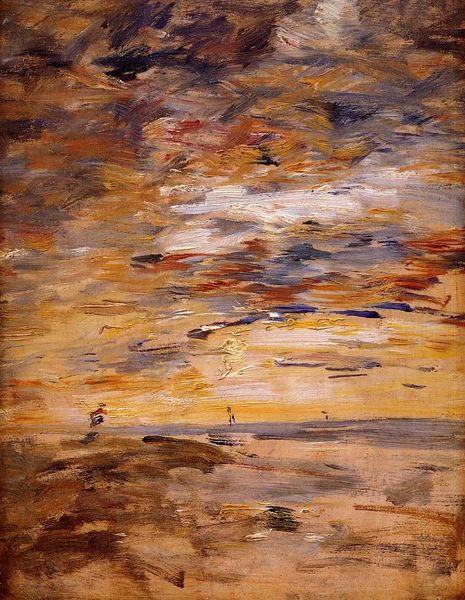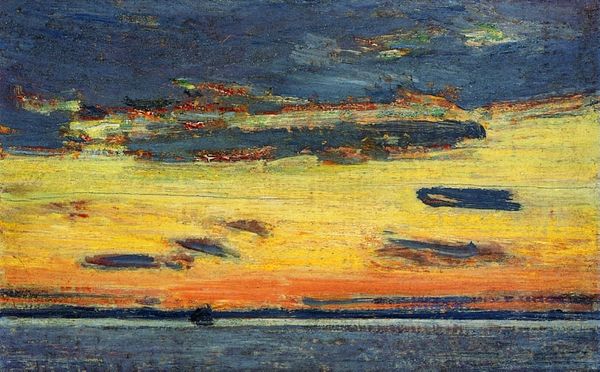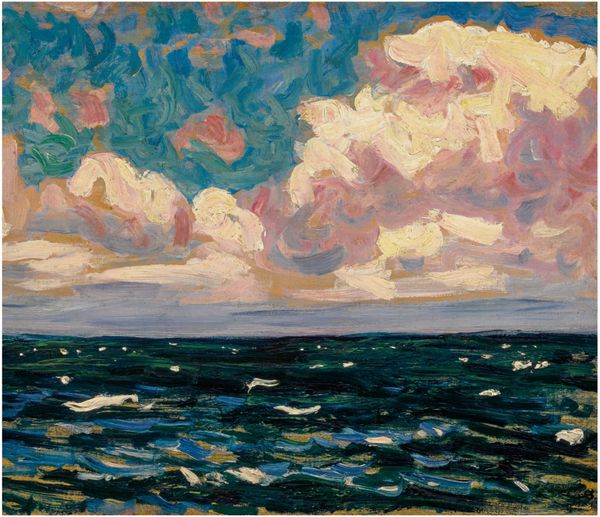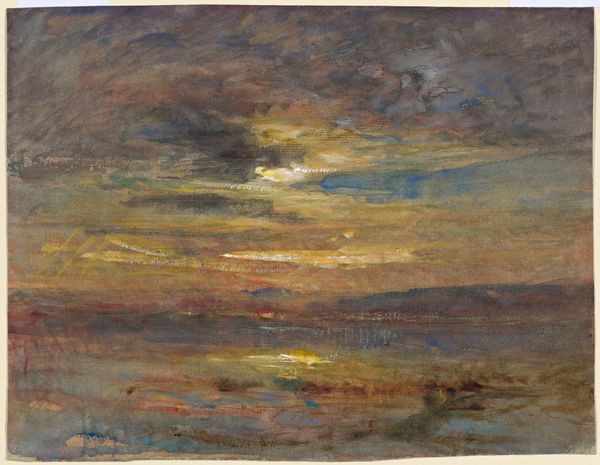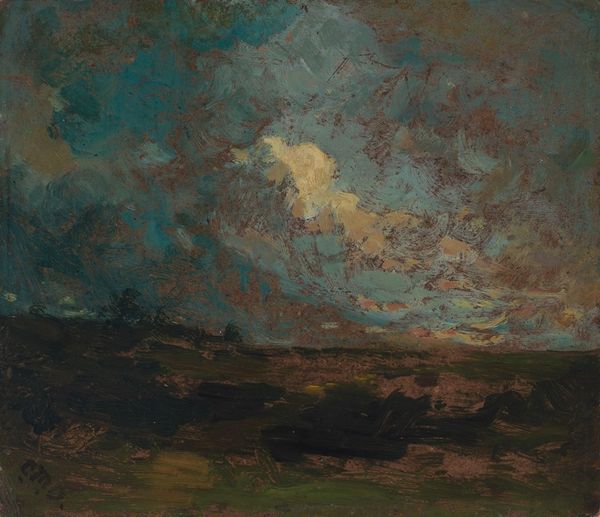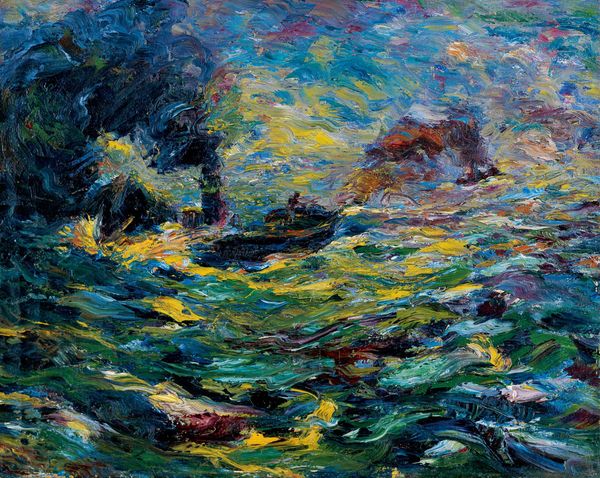
Copyright: Public domain
Curator: Oh, this piece has a very somber, contemplative feel to it. The colors are muted, almost melancholic. Editor: Let's delve into that a bit. This is Maxime Maufra’s “Sunset on the Sea,” created around 1910. Maufra was deeply involved in the Post-Impressionist movement, so already we can surmise that, beyond simply representing what he saw, he’s also trying to give us his *interpretation* of the sea and sky, an interpretation filtered through a specific set of formal concerns. Curator: You can really see that handling of oil paint; thick impasto laid down in broad strokes, very textural. What type of brush work do you suppose went into this artwork? It certainly isn't the type produced in an atelier. Did the artist use commercially-produced paints or grind and mix their own pigments? These details are essential. Editor: Knowing Maufra worked often *en plein air,* paints premixed at his disposal, offers insights into his choices, too. Consider how capturing a fleeting sunset necessitates rapid execution. Think about the culture of outdoor painting at the turn of the century— the logistics, the easels, the very idea of "capturing" nature becoming increasingly important through these artistic societies and exhibitions! It certainly influences our understanding of pieces like this, created by the artist on location. Curator: The brushstrokes create such an expressive surface. See how he used layers, each working towards a representation of atmospheric effects. I wonder about the socioeconomic factors at play – how advancements in paint technology, easily accessible and packaged paints allowed artists more liberty with working outdoors, versus previous production chains needed for more elaborate and less affordable paint production of past eras? Editor: Yes, and this was a time when coastal landscapes were becoming increasingly popular subjects, both in art and popular culture. Think of the rise of seaside tourism. Depictions of nature provided city-dwellers an idealized vision of leisure and escape. So what do we see reflected back to us through an artwork like this? Certainly nostalgia for what feels untainted, "natural." Curator: I wonder if it offers any connection, or critique, to the burgeoning coastal development industry of the era and materials it might have employed. Editor: It's a powerful contrast – that romanticism paired with that silent anxiety underlying modern life. It urges one to reconsider their interactions, at that moment, with society. Curator: I think it certainly is a conversation starter, revealing just as much about ourselves as viewers now as it may reveal about the artist at the time of its creation. Editor: I completely agree; the conversation continues, across the century that separates us.
Comments
No comments
Be the first to comment and join the conversation on the ultimate creative platform.
